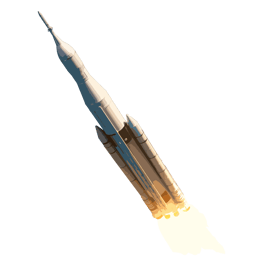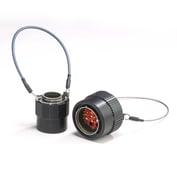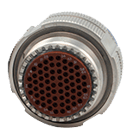Today's space industry depends on launchers to transport satellites into orbit and send scientific instruments, cargo, and people to space stations.
These systems rely on boosters to launch spacecraft into space and put them on the correct trajectory. Boosters sit on the side of a rocket and are jettisoned either after they have served their purpose, or their fuel level has been depleted. After the boosters are gone, the satellite continues its trajectory.
However, these payloads would never reach their target position if the connectors within the rocket fail, making the choice of a rugged, dependable interconnect solution a high priority.
Building a Rocket for Space Missions
There are four essential parts of a rocket:
- Propulsion System Control
- Power Distribution
- Guidance and Navigation
- Equipment Control
The propulsion system control produces the thrust to push the rocket forward and upward through space. It is composed of tanks, pumps, a rocket nozzle, a power head, and fuel. These components work together to propel the spacecraft.
The power distribution system delivers electrical power to the components and systems onboard the space vehicle. The power distribution system depends on the spacecraft's systems, avionics, instruments, and other equipment. The guidance and navigation system combines data from sensors to determine the spacecraft's trajectory and position.
Another critical part of any spacecraft is the equipment control. It handles the coordination and oversight of all the systems (e.g., power management, data acquisition, communications) and the components needed for a launch.
Environmental Challenges in Space
Spacecraft must overcome a spate of challenges; the same goes for the equipment and components that make up a spacecraft. For example, launcher vehicles experience extremely harsh and intense operating environments, including extreme temperatures: The rocket engine combustion chamber can reach a high of 6,000°F (3,300°C) and a low of –455°F after the launcher has escaped the Earth's atmosphere.
In addition, extreme changes will occur in atmospheric pressure, intense vibration, and heavy shock at liftoff. Increased radiation can interfere with or even damage electronic components.
Any technology used in launchers must be highly rugged and reliable to withstand these harsh conditions, leading to safe and successful space missions. This applies to the electrical interconnect solutions in the four primary systems cited above.
Interconnect Solutions for Rocket Launchers
Three connector types are commonly used in rocket launchers:
- Umbilical connectors
- Interstage and lanyard release connectors
- Hermetically sealed connectors
Umbilical connectors link the launcher to the pad; they require a combination of electrical fluid, and data cables to connect the launch vehicle (rocket) to the ground support equipment or launch infrastructure. Umbilical connections serve several purposes: data communication, fluid transfer, power supply, ground support, monitoring, and safety disconnect. To learn more about umbilical connector solutions, speak to a PEI technical expert.
Interstage and lanyard release connectors are also employed widely in launchers. An example is the deadface (DF) connectors used for reliable in-flight electrical disconnects for satellite and spacecraft separation, missile staging, and umbilical separation.
"Deadface connectors are used in launchers where the cables are located," says Dan Borges, Electrical Engineer at PEI-Genesis. "Before physical disengagement, electrical power on the connector's interface is removed, thereby eliminating the chance of triggering an explosion. Since there is no power on the receptacle or plug side, these connectors are called 'deadface.' At PEI-Genesis, we offer deadface connectors from Amphenol Aerospace and Eaton."
Amphenol Aerospace and Socapex Break-Away Fail-Safe Lanyard Release 38999 Series III connectors, currently available, are known for quickly disconnecting a connector with no damage. Compatible with all Mil-Spec backshells and accessories, the Series III are circular connectors with a bayonet push-pull coupling design. They come in a hybrid design with a composite outer operating sleeve over a metal shell for enhanced durability.
Hermetically sealed connectors provide sealing that adapts to cryogenic temperatures and works exceptionally well in high-pressure applications. These connectors are designed to prevent gases, including air and liquids, from entering. The hermetically sealed D38999 Series III connectors from Conesys deliver quality performance in these conditions, featuring a one-turn coupling system with a self-locking acme thread for improved strength and shock.
works exceptionally well in high-pressure applications. These connectors are designed to prevent gases, including air and liquids, from entering. The hermetically sealed D38999 Series III connectors from Conesys deliver quality performance in these conditions, featuring a one-turn coupling system with a self-locking acme thread for improved strength and shock.
Check out the PEI-Genesis Space Selection Guide to learn more about our connector portfolio for space.
Growing Interconnects Portfolio
At PEI-Genesis, we specialize in harsh environment interconnect solutions. With more than 25 manufacturing partners, we have a broad offering of space-ready solutions for launcher vehicles, and our in-house engineering team can assist with design-in applications from anywhere in the world.
To learn more about space-grade connector solutions, including deadface connectors, or to ask a design question, click the button below for technical support from a PEI Trusted Advisor.











